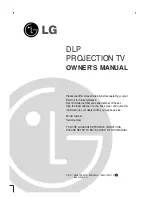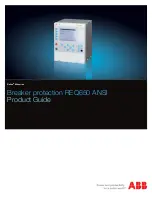
2.14 Backup Time Overcurrent Protection
279
7SD5 Manual
C53000-G1176-C169-1
(No. 7110). The binary input (if allocated) is applied to all stages of the time-overcur-
rent protection. With
I(3I0)p Tele/BI
=
YES
you define that the
I
P stages trip
without delay after pickup if the binary input was activated. For
I(3I0)p Tele/BI
=
NO
the set delays are always active.
Instantaneous tripping by the operational auto-reclosure function should only be
chosen if the overcurrent protection is set to emergency function. Since the fast main
protection function - differential protection and/or distance protection - guarantees a
fast and selective tripping with or without auto-reclosure, the overcurrent protection as
a back-up protection may not perform a non-selective trip, even before auto-reclosure.
If the
I
P stage, when switching the line on to a fault, is to trip without delay or with a
short delay,
SOTF Time DELAY
(address
2680
, see above under margin heading
„General“), the parameter
I(3I0)p SOTF
(address
2671
) is set to
YES
. We recom-
mend, however, not to choose the sensitive setting for the switch on to a fault function
as energizing of the line on to a fault should cause a large fault current. It is important
to avoid that the selected stage picks up due to transients during line energization.
Overcurrent Stages
I
P
, 3
I
0P
in Inverse-
Time O/C Protec-
tion with ANSI
Characteristics
In the case of the inverse overcurrent stages, various characteristics can be selected,
depending on the ordering version of the device and the configuration (address
126
),
With the ANSI characteristics (address
126
Back-Up O/C
=
TOC ANSI
), the follow-
ing options are available at address
2661
ANSI Curve
:
Inverse
,
Short Inverse
,
Long Inverse
,
Moderately Inv.
,
Very Inverse
,
Extremely Inv.
and
Definite Inv.
.
The characteristics and equations they are based on are listed in the „Technical Data“.
For the setting of the current thresholds
Ip>
(address
2640
) and
3I0p PICKUP
(ad-
dress
2650
) the same considerations as for the overcurrent stages of the definite time
protection (see above) apply. In this case, it must be noted that a safety margin
between the pickup threshold and the set value has already been incorporated. Pickup
only occurs at a current which is approximately 10
°
% above the set value.
The above example shows that the maximum expected operating current may directly
be applied as setting here.
Primary: Set value
I
P = 630 A,
Secondary: Setting value
I
P = 5,25 A, d.h. (630 A/600 A) X 5 A.
The time multiplier
Time Dial TD Ip
(address
2643
) derives from the time grading
schedule set for the network. For the use as emergency overcurrent protection shorter
delay times make sense (one grading time step above instantaneous tripping), since
this function is to work only in case of a failure of the main protection functions, i.e.
differential and/or distance protection.
The time multiplier setting
TimeDial TD3I0p
(address
2653
) can usually be set
smaller according to a separate earth fault grading plan. If only the phase currents are
to be monitored, set the pickup value of the earth fault stage to
∞
.
In addition to the current-dependent delays, a delay of constant length can be set, if
necessary. The setting
T Ip Add
(address
2646
for phase currents) and
T 3I0p
www
. ElectricalPartManuals
. com
















































